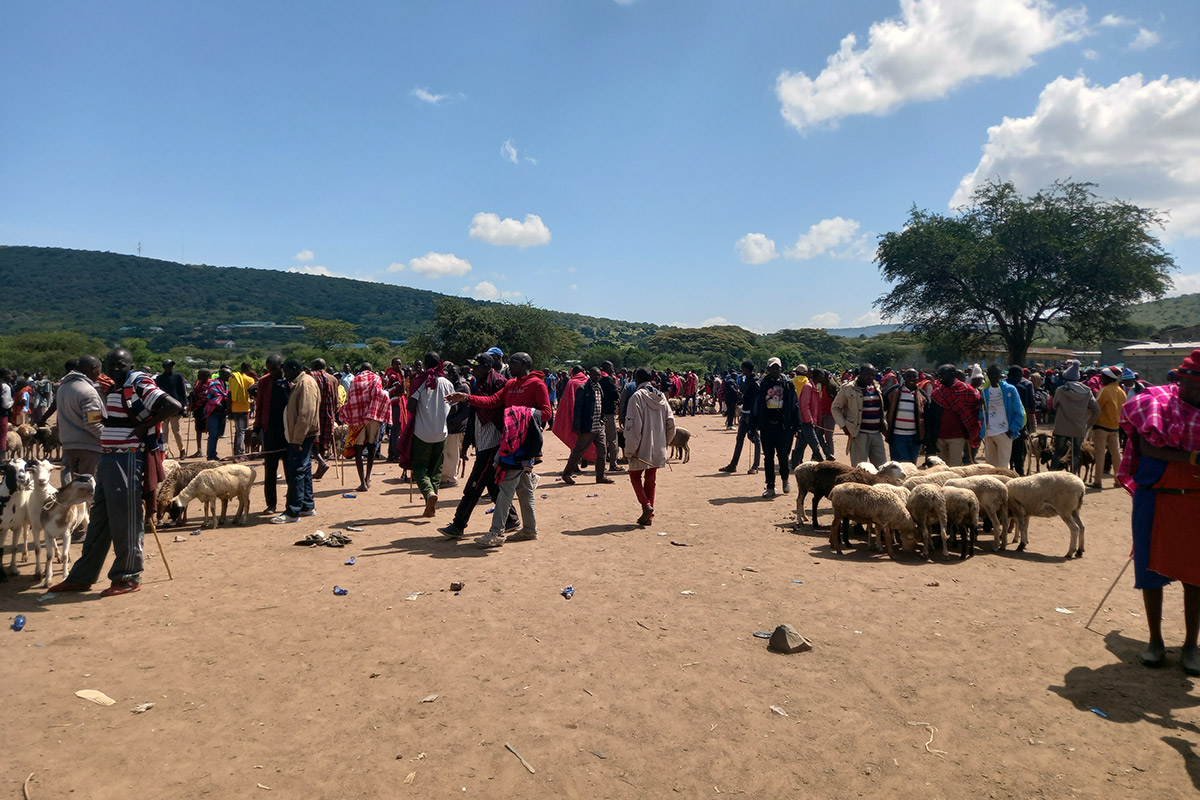The Maasai Mara Symphony: Soundscapes from the Kenyan Savanna

Photo by Cindy Obath
When you imagine a Kenyan savanna, what’s the first thing that comes to your mind? The rumble of migrating wildebeest thundering through the plains? A lion’s roar echoing across the backdrop of a brilliant sunset? The trumpets of elephants taking a refreshing mud bath next to a rushing river?
The sights of a landscape are often deeply connected to the music of its soundscape in our imaginations. Nature isn’t the only member of the Maasai Mara’s symphony. The people who live there are crucial parts of the chorus—laughing with family and friends, negotiating prices at the local market, and celebrating special moments in their communities.
Cindy Obath, a Kenyan conservationist, wants to bring the often-overlooked human soundscape of the Maasai Mara to this summer’s Earth Optimism × Folklife program. Her goal is to bring the Mara to the National Mall, immersing visitors in a place they may have only experienced through nature documentaries.
“I’m not trying to capture the silence of the Mara at night. No, there’s no more need for that,” she says. “I’m trying to capture what’s loud. What’s loud is what the daily life looks like, especially in urban areas within the Mara.”

A self-proclaimed city girl from Nairobi, Obath was once a tourist to the Mara as well. The main National Reserve is surrounded by a patchwork of community conservancies, safari camps, and other attractions for travelers who want to explore the natural wonders of the region. Of course, as tourism increases, the infrastructure to support both visitors and the people who make those experiences happen must increase too. This rapid development can bring new opportunities to local communities – yet without mindful planning, they can also present new challenges.
As Obath began working with conservation organizations throughout the region, she began experiencing the Maasai Mara differently than before.
“It’s a prolific landscape,” she explains. “I think it’s important for us to be able to celebrate that, and for tourists to come and enjoy the heritage that we have, but I want to highlight the real issues that happen on the ground and affect people living in that area. I want to highlight what the Maasai Mara looks like from a day-to-day perspective, as opposed to a tourist perspective. It may seem bleak, depending on who you speak to.”
Locals going about their day probably aren’t going to spend their mornings wandering the wilderness and listening to the lyrical calls of colorful birds—after all, they’ll spend more time trying to steer clear of the bellows of hippos or the cackles of hyenas. Instead, they may swing by the livestock market, surrounding themselves with the familiar rhythm of snorting cattle, bleating goats, and bartering crowds.
These are the kinds of spaces that Obath is visiting to collect recordings for the upcoming Folklife Festival. Her goal is to create a soundscape that is not often heard outside of the Maasai Mara: an average day, in a typical community. Here’s a clip of what she captured at a livestock market:

Livestock are an important part of the region’s economy and culture. The local Maasai people traditionally live a pastoralist lifestyle, herding their flocks across the landscape to follow the rains as the seasons change. This sustainable management strategy, which mirrored the annual journeys of the wildlife that shared their home, gave the grasslands time to recover from grazing.
Today, historically communally owned lands have been divided into private ranches, farms, and other developments, disrupting an age-old harmony. People struggle to not be left behind by a rapidly changing world, while their wild neighbors find it more difficult to follow their ancient migration paths. Instead of coexisting, humans and wildlife are increasingly coming into conflict. Climate change is further heating up the issues that the landscape faces.
“Sometimes, it becomes difficult to remain hopeful,” Obath admits. “A lot of people have very gloomy outlooks of the Mara, but that makes me hopeful at the same time. People are more vocal about how quickly things need to change, and therefore how quickly we need to change them. And I think people are finally listening.”
Obath and her colleagues in the Kenyan delegation hope they can reach even more listening ears at the Festival’s Earth Optimism × Folklife program. Representatives from the One Mara Research Hub, the Maa Trust, the Mara Elephant Project, and the Kenya Restoration Centre will share their inspiring research and community outreach work with visitors to the Animals, Plants, and Us pavilion.
“We want to bring the old and the new—bring the culture and the history, but also really bring what’s happening in the twenty-first century,” Obath says. “We’ve got these four different organizations who are coming in together under one essential vision. They’ll be talking about how they’re helping the Mara stay alive and thrive in a time when there’s so much change affecting it.”
During the Festival, the Animals, Plants, and Us tent is sure to resonate with the delegates and guests discussing the Kenyan conservancy model, tracking wildlife movements across interactive maps, discovering connections between cultures, and more. In the background, Obath’s recordings will transport visitors halfway across the planet, so conversations about conservation in the Maasai Mara can mingle with conversations among the people who will put those ideas into action.
“When you hear something versus when you see something, completely different thoughts tend to emerge,” Obath says. “I want to get people to get curious about the daily life of people in the Maasai Mara. I think that’s what soundscapes can help me achieve at the exhibit.”

Sarah Wheedleton is the communications and outreach specialist for the Earth Optimism × Folklife program and Working Land & Seascapes at the Smithsonian Conservation Biology Institute.

